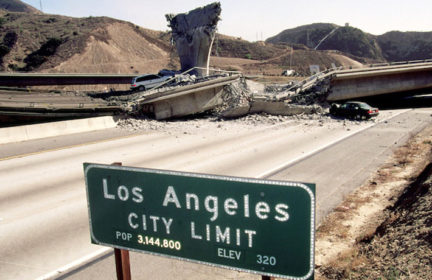NYT article on PNW tsunami threat
Hi all,
Just wanted to share this article from yesterday’s New York Times re: the tsunami aspect of the seismic hazard in the PNW and how communities are trying to prepare: https://www.nytimes.com/2022/02/07/us/tsunami-northwest-evacuation-towers.html
The article actually does a good job of explaining why a tsunami triggered by a Cascadia Subduction Zone (CSZ) earthquake would be so destructive, touching not only on the oft-mentioned aspects of the hazard (e.g., the height of the wave; the arrival time) but also the fact that 12-20 minutes of lead time for evacuation does not get you as far (literally) on buckled, undriveable roads, and the fact that the coasts of Northern California, Oregon, and Washington have a lot of huge bays fronted by multi-mile-long, extremely low-lying sand spits that have been heavily developed and will literally be overtopped by the wave. (The article has tons of maps that illustrate this effectively.)
We’ll have to wait and see what happens after the votes on the various evacuation-tower-financing bond measures are cast, but it seems like there are some real signs that people in the affected communities are taking the threat seriously. It’s one thing when geologists at DOGAMI and the major research universities in the region offer journalists quotes about the number of thousands of people who will die; it’s another thing when a school superintendent says, “The fact of the matter is that if a tsunami occurs tomorrow, we are going to lose all of our children.” At least we’re (maybe) past the point where nobody in these communities is willing to confront the reality that they will not be able to evacuate.
I also read (too many of) the comments. It was interesting to see what wasn’t getting across/what people were confused about. For example, a lot of folks seemed to have a “these towers will never work!” reaction, but the Japanese have been building them for a while and there are engineering design guidelines for this type of structure. I’d really prefer a managed retreat strategy for a place like Ocean Shores than a bunch of expensive, ugly evacuation towers (especially since sea level rise will come for that town even if the tsunami holds off for a couple more centuries), but the former is so legally fraught and so much more costly that I just don’t see Washington, let alone Oregon, getting to it in a timely fashion. I suspect they’re going to let California figure it out first (with respect to climate change, i.e., not tsunamis), since California has money. That’s moving really slowly, though, so I feel like Oregon and Washington should maybe just invest in some towers in the meantime, you know?
Also, a lot of people were getting in “people shouldn’t live there!” arguments, and many of the people on Team People Shouldn’t Live There seemed to have the impression “there” consists of super wealthy communities where people with options have chosen to live because they “want an ocean view.” But a lot of the PNW coast is pretty economically depressed, and it’s less that people have chosen to live there than that they’re from there and it would be super challenging for them to relocate. Also, scientists didn’t really understand that these tsunami-generating mega-quakes could happen here until the 1990s, so of course people settled and built in dangerous places— they didn’t know they were dangerous!
The other interesting thing in the comments is just seeing the range of reactions. Some people were like, “So much for visiting Oregon and Washington ever in my life!” While some PNW commenters’ reactions were more along the lines of, “I’m figuring I’ll probably just die when it hits and I’m okay with that.” Personally, I visit the coast all the time, but don’t like being out on those spits. My husband has wanted to explore a couple of them (at Tillamook Bay and the mouth of the Columbia) and I was totally jittery the whole time. I also haven’t spent a night in the tsunami inundation zone since 1996 and have no intention of ever doing so again.
So, I’m curious: Any PNWers out there have thoughts on any of this? (Or people from BC or Japan?) For those who aren’t PNWers, do you think we’re nuts to live here? 😀
-
Comments (15)
-
